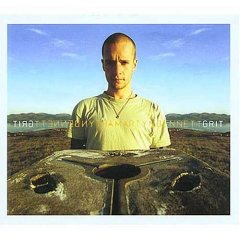
Scotland is internationally known for its traditional music, often known as Scottish folk music, which remained vibrant throughout the 20th century and into the 21st when many traditional forms worldwide lost popularity to pop music. Traditional Scottish music comprises a variety of different styles such as ballads, reels, jigs and airs. Traditional Scottish music is closely associated with the bagpipes which is credited as having a prominent role in traditional music originating from the country. The bagpipes are considered to an "iconic Scottish instrument" with a history dating back to the 15th century. Other notable Scottish instruments include the tin whistle, the accordion and the fiddle.

Scottish folk music is a genre of folk music that uses forms that are identified as part of the Scottish musical tradition. There is evidence that there was a flourishing culture of popular music in Scotland during the late Middle Ages, but the only song with a melody to survive from this period is the "Pleugh Song". After the Reformation, the secular popular tradition of music continued, despite attempts by the Kirk, particularly in the Lowlands, to suppress dancing and events like penny weddings. The first clear reference to the use of the Highland bagpipes mentions their use at the Battle of Pinkie Cleugh in 1547. The Highlands in the early seventeenth century saw the development of piping families including the MacCrimmons, MacArthurs, MacGregors and the Mackays of Gairloch. There is also evidence of adoption of the fiddle in the Highlands. Well-known musicians included the fiddler Pattie Birnie and the piper Habbie Simpson. This tradition continued into the nineteenth century, with major figures such as the fiddlers Niel and his son Nathaniel Gow. There is evidence of ballads from this period. Some may date back to the late Medieval era and deal with events and people that can be traced back as far as the thirteenth century. They remained an oral tradition until they were collected as folk songs in the eighteenth century.

A cèilidh or céilí is a traditional Scottish and Irish social gathering. In its most basic form, it simply means a social visit. In contemporary usage, it usually involves dancing and playing Gaelic folk music, either at a home or a larger concert at a social hall or other community gathering place.
Martyn Bennett was a Canadian-Scottish musician who was influential in the evolution of modern Celtic fusion, a blending of traditional Celtic and modern music. He was a piper, violinist, composer and producer. Diagnosis of serious illness at the age of thirty curtailed his live performances, although he completed a further two albums in the studio. He died from cancer in 2005, fifteen months after the release of his fifth album Grit.
Celtic rock is a genre of folk rock, as well as a form of Celtic fusion which incorporates Celtic music, instrumentation and themes into a rock music context. It has been prolific since the early 1970s and can be seen as a key foundation of the development of successful mainstream Celtic bands and popular musical performers, as well as creating important derivatives through further fusions. It has played a major role in the maintenance and definition of regional and national identities and in fostering a pan-Celtic culture. It has also helped to communicate those cultures to external audiences.

A bothy is a basic shelter, usually left unlocked and available for anyone to use free of charge. It was also a term for basic accommodation, usually for gardeners or other workers on an estate. Bothies are found in remote mountainous areas of Scotland, Northern England, Ulster and Wales. They are particularly common in the Scottish Highlands, but related buildings can be found around the world. A bothy was also a semi-legal drinking den on the Isle of Lewis. These, such as Bothan Eòrapaidh, were used until recent years as gathering points for local men and were often situated in an old hut or caravan.

The Peatbog Faeries are a largely instrumental Celtic fusion band. Formed in 1991, they are based in Dunvegan on the Isle of Skye, Scotland.
Celtic fusion is an umbrella term for any modern music which incorporates influences considered "Celtic", or Celtic music which incorporates modern music. It is a syncretic musical tradition which borrows freely from the perceived "Celtic" musical traditions of all the Celtic nations, as well as from all styles of popular music, it is thus sometimes associated with the Pan-Celtic movement. Celtic fusion may or may not include authentic traditional music from any one tradition under the Celtic umbrella, but its common characteristic is the inspiration by Celtic identity.

Solar Shears is the third studio album and fourth album overall by Scottish Celtic fusion band Shooglenifty. After the critical acclaim given to their underground second album A Whisky Kiss (1996), the band left Greentrax Recordings and signed to Vertical Records in the UK and Compass Records in the US and hired long time producer Jim Sutherland to produce their new album. The album sees the band expand their self-described "acid croft" sound, featuring a wide range of musical influences such as worldbeat, Eastern music, African music, psychedelic music, bluegrass, breakbeat and techno fused with a traditional Scottish Celtic music sound. With this album, Sutherland introduced many unorthodox approaches to the band's music, including looped beats, scratching, electro-atmospherics and sampled 'discovered sounds' from industrial clanks and rumbles to snatches of telephone conversation and recorded pelican crossing announcements.
The Scots Trad Music Awards or Na Trads were founded in 2003 by Simon Thoumire to celebrate Scotland's traditional music in all its forms and create a high profile opportunity to bring the music and music industry into the spotlight of media and public attention. Nominations are made by the public and in 2019 over 100,000 public votes were expected across 18 categories.
Mouth Music is a Scottish-inspired musical project founded in 1988, whose combination of traditional Gaelic songs and music with contemporary instrumental and technological settings led them to international fame in the early 1990s.
Talitha MacKenzie is a Scottish-American world music recording artist, and historical dance and music teacher and performer. Initially known as a vocalist in the original duo Mouth Music, she has maintained a solo career. Although most associated with Celtic and Gaelic music, she performs a wide range of early music and dance, as well as her own compositions.

Grit is the last studio album by the Scottish Celtic fusion artist Martyn Bennett. It was released on 13 October 2003 on the Real World label.

Celtic Folkweave is a studio album by Mick Hanly and Mícheál Ó Domhnaill, released in 1974 by Polydor Records. Considered a seminal album in the traditional Irish music genre, the musicians involved in the recording would go on to found some of the most innovative and important groups to perform traditional Irish music.
Martin Swan is a Scottish multi-instrumentalist, songwriter, composer, record producer, recording engineer and instrument designer.
Bongshang are a Scottish band from Shetland, who fuse traditional Shetland and folk styles with rock, funk, electronica and contemporary production techniques. They have been likened to Celtic fusion artists such as Shooglenifty and Martyn Bennett.

Margaret Bennett is a Scottish writer, folklorist, ethnologist, broadcaster, and singer. Her main interests lies in the field of traditional Scottish folk culture and cultural identity of the Scots in Scotland and abroad. The late Hamish Henderson, internationally distinguished poet and folklorist, said about her: Margaret embodies the spirit of Scotland.

Findlay Napier is a Scottish singer songwriter and teaching artist. He was a member of Scottish folk group Back of the Moon and runs music writing courses.

Niteworks is an Electronic Celtic fusion band from the Isle of Skye. The band are known for writing new songs in Gaelic and melding the bagpipes and Gaelic song forms such as puirt a beul with techno and house beats.
Valtos is an electronic Celtic fusion duo based on the Isle of Skye. Their name comes from the village of the same name, close to Staffin on Skye.














